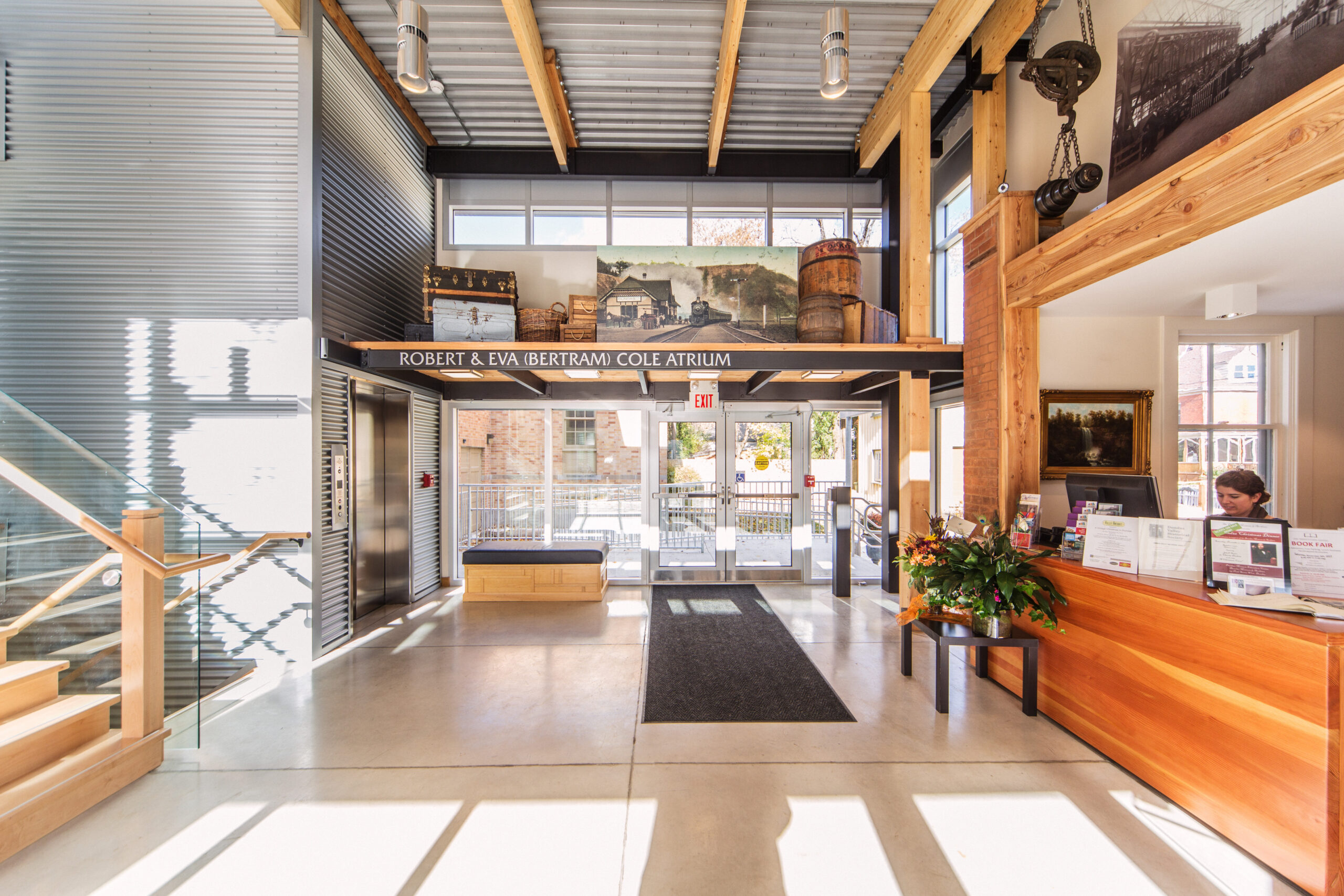We were retained in 2011 by the Dundas Museum and Archives to address the condition of its buildings – the Pirie House, Doctor’s House and 1950’s museum building.
The Challenge
Constructed in three time periods, spanning 82 years, the existing building complex was made of a wide range of materials. The result was a variety of colours and textures, poor access and fragmentation. Ultimately, the organization of the space and condition of the buildings did not meet the current needs of the Museum, particularly concerning barrier-free accessibility and space requirements for exhibits, storage, offices, and programs.
The Solution
The client made significant investment in historical buildings both through new design, adaptive re-use, rehabilitation and preservation — ultimately recognizing the value of historical architecture and culture. Now, the contrast between materials allowed for clear distinction between architectural details, the old versus new and pays homage to Dundas Ontario’s industrial history.
By creatively resolving the entry, we integrated the three sites and connecting them via landscape and architecture. We recessed the entry to create a forecourt to the museum, which isolated sound to neighbours and created the opportunity to stage functions in its beautiful gardens, filled with heritage perennials grown from cuttings sourced in the heritage homesteads of Dundas’ founders.
The mechanical design was carefully integrated within the architecture of the new double height entrance space, with some aspects of the systems hidden within the existing building attic space and others, such as exposed and polished spiral steel ductwork, left prominent to serve the aesthetic purpose of the space. Much attention was given during construction to ensure these design aspects were successfully implemented and coordinated onsite.
Next, we created transparency between the archiving functions and gallery. Students and visitors now visually connect with conservators, viewing first-hand how an exhibit or collection is processed and preserved. Additionally, moving the education centre from the basement to the Pirie House created a new dynamic light filled space with sound, project and IT capabilities not previously available. The education centre can be isolated for separate users, opening up a revenue stream for rental and opportunity for new community space.
Added Value
During the design process, we saw the potential to shape a pavilion area in the entry, effectively expanding the secure gallery space, lifting it above grade and visually connecting it to the street. Not originally part of our scope, we developed this additional space without impacting the budget. A small display was set up at the original front entry in order to provide additional secure space for objects and retain the Bertram doors in a prominent location on the site. Both design opportunities ultimately offered the museum greater display area.
Incorporating upgrades to mechanical systems created distinct zones, with careful consideration to the archival spaces, balancing that with visitor comfort. A variable refrigerant volume (VRV) heat pump system was selected to provide heating and cooling for the new construction areas and to supplement air conditioning within parts of the existing building where change of use dictated so. The system was selected for its high co-efficient of performance during the cooling and shoulder seasons, its ease of integration within existing buildings, and relatively small equipment foot print. We successfully reused many of the existing mechanical systems and maintained existing ceiling heights, despite a change-in-use of many spaces and corridors.
Special Features
Barrier free accessibility was paramount. The planning provided for access and barrier free parking not originally in the design. All levels of the building are now connected by elevator.
Careful consideration was given to the Museum’s business planning, including the board’s desire to create new gallery spaces, allow for separate exhibits and improved engagement with younger audiences including schools and camps. With help from the board, we identified new revenue streams and created spaces which successfully supported these activities, adding to the financial stability of the facility.
By improving the envelope, high efficient mechanical systems, restoring the traditional gardens, improved lighting/electrical efficiency, all contributed to the sustainable social, financial and environmental impact of the structure.
Client Response:
“It’s not just about history. It’s about encouraging critical thinkers and responsible citizenship.”
Dr. John Picone, Director of Education
Hamilton Spectator, A Museum Runs Through It, June 30, 2013







